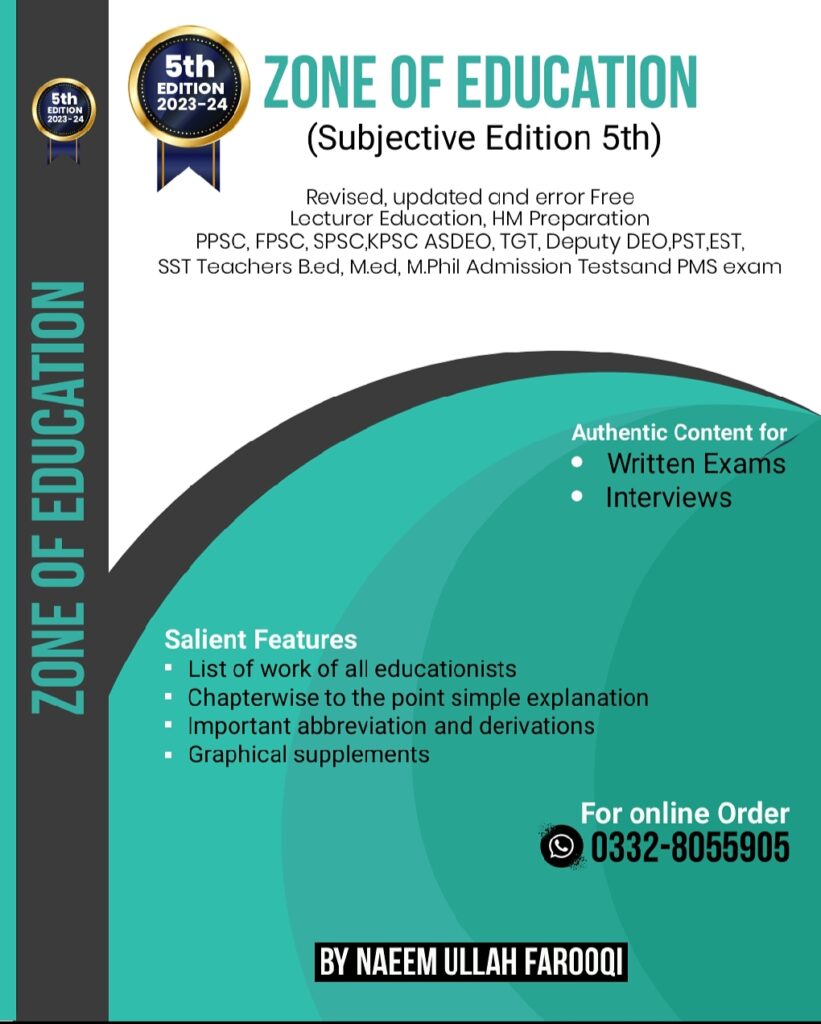Educational Research
.What type of tests produce results of questionable value:
· (a) Weak
· (b) Unreliable
· (c) Inappropriate
· (d) a, b & c
132. A researcher tries to find out “causes of unrest among students”, the study will be called:
· (a) Experimental
· (b) Causal
· (c) Survey
· (d) Correlation
Answer: (b) Causal
133. The value of the semi-interquartile range in a distribution where Q1 = 78 and Q3 = 93 will be:
· (a) 15
· (b) 30
· (c) 31
· (d) both b & c
Answer: (a) 15
(Semi-interquartile range = (Q3 – Q1) / 2, i.e., (93 – 78) / 2 = 15)
134. Questionnaire is the most useful instrument for:
· (a) Historical study
· (b) Observational study
· (c) Experimental study
· (d) Survey study
Answer: (d) Survey study
135. The difference between the population means of two groups has been calculated by a researcher. The most suitable test of significance to be used will be:
· (a) T-test
· (b) Chi-square
· (c) w²
· (d) No test is needed
Answer: (a) T-test
136. The prerequisite for conducting a research study is:
· (a) Formation of hypothesis
· (b) Data collection
· (c) Testing hypothesis
· (d) Locating a problem
Answer: (d) Locating a problem
137. A systematic, objective analysis and recording of controlled observation is called:
· (a) Hypothesis
· (b) Assumption
· (c) Conclusion
· (d) Research
Answer: (d) Research
138. A research study leads to the development of:
· (a) Generalizations
· (b) Principles
· (c) Theories
· (d) All of the above
139. The deductive method moves:
· (a) From specific application to general assumption
· (b) From general assumption to specific application
· (c) From theory to practice
· (d) From hypothesis to conclusion
Answer: (b) From general assumption to specific application
140. Historical research describes:
· (a) What was or what happened
· (b) What is or that is happening
· (c) What will be or what will happen
· (d) What should be or what should happen
Answer: (a) What was or what happened
141. Internal criticism and external criticism establish the authenticity of:
· (a) Experimental Research
· (b) Descriptive Research
· (c) Historical Research
· (d) None of the above
Answer: (c) Historical Research
142. The qualities of a good research tool are:
· (a) Validity
· (b) Economy
· (c) Reliability
· (d) All of the above
Answer: (d) All of the above
143. The reference list or bibliography is placed:
· (a) In the beginning of research report
· (b) In the middle of research report
· (c) At the end of research report
· (d) a & b
Answer: (c) At the end of research report
144. When data is collected from all the members of the population, the study is called:
· (a) Sample study
· (b) Census study
· (c) Case study
· (d) Comparative study
Answer: (b) Census study
145. A questionnaire in which possible responses are provided to the respondent and he/she has to select from the given responses is called:
· (a) Open-ended
· (b) Close-ended
· (c) Structured
· (d) Unstructured
Answer: (b) Close-ended
146. The value of correlation between two variables is always:
· (a) Below zero
· (b) Above zero
· (c) Less than one
· (d) More than one
Answer: (c) Less than one
(The correlation coefficient ranges between -1 and +1, but it is always less than or equal to one.)
147. All members of a real or hypothetical set of persons, objects, or events are called:
· (a) Population
· (b) Sampling
· (c) Random sampling
· (d) Cluster sampling
Answer: (a) Population
148. A description of the study written by a person who conducted it is referred to as:
· (a) Secondary source
· (b) Primary source
· (c) Related material
· (d) Personal observations
Answer: (b) Primary source
149. For what type of research study is the questionnaire the most useful instrument?
· (a) Historical
· (b) Survey
· (c) Descriptive
· (d) Experimental
Answer: (b) Survey
150. To investigate the problems of special learners is:
· (a) Experimental research
· (b) Causal comparative research
· (c) Descriptive research
· (d) None of the above
Answer: (c) Descriptive research
151. The impact of A.V. (Audio-Visual) aids on student learning is:
· (a) Experimental research
· (b) Descriptive research
· (c) Historical research
· (d) Co-relational research
Answer: (a) Experimental research
153. To study the effect of having a working mother on school absenteeism is:
· (a) Experimental research
· (b) Descriptive research
· (c) Documentary research
· (d) Causal comparative research
FORMULATION OF RESEARCH PROBLEM
1. What does randomization ensure in experimental research?
(a) Uniformity of the groups.
(b) Similarity of the groups.
(c) Uniformity and similarity of the groups.
(d) Uniformity, similarity, and equalization of the groups.
Answer: (d) Uniformity, similarity, and equalization of the groups.
2. Power of the test of significance means probability of what?
(a) Incorrect rejection of the null hypothesis.
(b) Correct rejection of the null hypothesis.
(c) Incorrect acceptance of the null hypothesis.
(d) Correct acceptance of the null hypothesis.
Answer: (b) Correct rejection of the null hypothesis.
3. What does F-ratio mean?
(a) A ratio between mean SS and mean SS.
(b) A ratio which is always more than 1.0.
(c) A ratio between mean SS and mean SSA.
(d) A ratio between mean SS and mean SS.
Answer: (a) A ratio between mean SS and mean SS.
4. In which situation can the χ² (Chi-square) test be used?
(a) k², but some expected frequencies are less than 5.
(b) df is greater than 1, but more than 20% of frequencies are smaller than 5.
(c) Any expected frequency is smaller than 1.
(d) None of the above is found to be a fact.
5. What is wrong about non-parametric tests of significance?
(a) They are distribution-free techniques of analysis.
(b) They assume that groups should be homogeneous.
(c) They make no assumption about the parameters.
(d) They do make certain assumptions, but these are fewer and less stringent.
Answer: (b) They assume that groups should be homogeneous.
6. Action research is ordinarily concerned with problems:
(a) Of general nature.
(b) Constituting universal truths.
(c) Are of immediate concern and call for immediate solutions.
(d) Have long-range implications.
Answer: (c) Are of immediate concern and call for immediate solutions.
7. What is the aim of educational research?
(a) Identifying major problems that need to be solved.
(b) Searching for new facts and principles underlying the process of education.
(c) Identifying the aims of education.
(d) Identifying the values that need to be inculcated in the pupils.
Answer: (b) Searching for new facts and principles underlying the process of education.
8. Why is research in education important for teachers?
(a) It adds to their academic qualifications.
(b) It makes them wiser.
(c) It makes them better teachers.
(d) It enables them to make the best possible judgments about what should be taught and how.
Answer: (d) It enables them to make the best possible judgments about what should be taught and how.
JOIN ZONE OF EDUCATIONPK!
Discover the most comprehensive and reliable pedagogy resources in Pakistan, curated for competitive exam success. Our content covers all competitive exam MCQs, including PPSC, FPSC, AJKPSC, SPSC, and more. Designed to empower learners with top-notch material and insights, trust us for your preparation journey!


